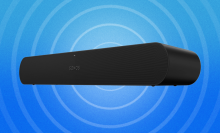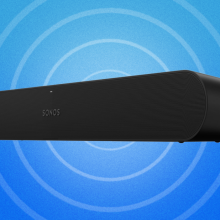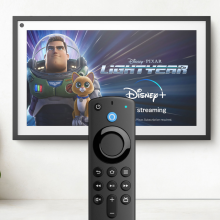The Apple Watch is, and has always been, an amazing device hampered by battery life that requires you to charge it at least once, and sometimes twice, per day.
With the Apple Watch Series 10, which marks the 10th anniversary of the wearable, Apple hasn't exactly fixed the issue. The company still says the Watch has "all-day battery life," which translates into 18 hours of use. And in my testing, the new Watch has had pretty much exactly the same battery life as Series 9.
But the company did significantly improve charging speed, which is the next best thing, and in my opinion, the biggest reason to buy this watch.
Apple Watch Series 10 price and specs
Apple Watch Series 10 starts at $399, but that's just the tip of the iceberg. That price is for the GPS-only, aluminum variant in the 42mm size. If you want the slightly bigger, 46mm size, you'll have to dish out $429 (the various finishes, such as Silver, Rose Gold, and Jet Black, are free). And adding the cellular option will further increase that price by $100.
The Titanium variant costs $699, is available only in the 46mm size, and includes cellular connectivity.
Regardless of the finish and the size, the key specs are the same for all of the variants:
Apple S10 chip
Wide-angle OLED display with up to 2000 nits maximum brightness, and 1 nit minimum brightness
Up to 18 hours of battery life with fast charging
Speaker with media playback
A bevy of sensors, including an electrical heart sensor, optical heart sensor, temperature sensor, high-g accelerometer, high dynamic range gyroscope, and the new depth gauge, as well as the new water temperature sensor

Apple Watch Series 10 design
The new Apple Watch Series 10 is thinner and lighter with a larger, better display.
In terms of numbers, that means the Series 10 is a hair (1mm) thinner than its predecessor. It has a display that's slightly larger (46mm compared to 45mm or, if you opt for the smaller variant, 42mm versus 41mm). But the form factor has also changed a little, with the new display being more square than before.
Finally, the Apple Watch Series 10 is a lot lighter than before, weighing just 36.4 grams, shaving nearly a third off the weight of the Series 9, which weighs 51.5 grams.

In real life, you will notice the weight reduction; the new Watch is as light as a feather. (Bear in mind that I only tested the aluminium variant; the titanium version weighs more). The other changes are truly minor, though, and you won't notice them unless you look for them, or compare the new and the old version directly.
Apple Watch Series 10 display
The display being ever so slightly larger brings exactly the benefits you'd imagine. It's a bit nicer to use, but there's nothing groundbreaking here.
The new, wide-angle OLED tech Apple is using really does improve visibility when glancing the watch from the side, which, for me, is most of the time, so that's a nice touch. Some watch faces, like Activity and Reflections, now display a ticking seconds hand in always-on mode. It would be great to see this feature extended to other watch faces and third-party apps, though Apple couldn’t confirm if that will happen.

It’s hard to fault Apple for not making more drastic changes here. The Apple Watch is already a compact device, and making it significantly thinner would likely compromise battery life or other features. Likewise, the display can’t get much bigger without the watch becoming too large for some users. While the display has been upgraded, it’s the kind of change you’ll only notice when you’re actively looking for it.
Better deal than the Apple Watch Ultra?
I haven't had any time with the titanium variant, but the fact that it exists brings the Apple Watch Series 10 a step closer to the titanium-only Apple Watch Ultra 2 (it also brings the price up to $699, though).
But there are other ways in which the new Series 10 is similar to the Ultra. For example, the new display technically has more screen area than the one on the Ultra 2, without the imposing bulk of Apple's largest watch on your hand.
Together, with some other advantages such as faster charging and diving features(see more below), it gives the Series 10 serious "slim Ultra" vibes. Given that the Ultra wasn't upgraded this year (if you don't count the new Black color), all of these improvements make a compelling case for choosing the Series 10 instead of the Ultra.
It’s significantly cheaper, lighter, and thinner, while offering a larger display and even including some features that were previously exclusive to Apple’s top model.
Apple Watch Series 10 audio
The Apple Watch Series 10 also comes with a number of small improvements that you might not notice at first, but they will make your life better, such as better voice isolation during calls (a big one for me as I often answer calls on the watch while I frantically search for my misplaced phone).

Also new is the ability to play audio through the Watch's built-in speaker. It's cool to be able to do this, but don't expect too much from the sound quality. I have a suspicion this is one of those features that kids will use a lot more than adults.
Apple Watch Series 10 health and fitness features
The new Watch ups the game when it comes to health and fitness as well. It's not exactly a diving computer, but it now has a depth gauge (down to 6m/20ft) and the accompanying Depth app, a water temperature sensor, support for the Oceanic+ apps, and the new Tides app.
Other improvements include the Translate app, sleep apnea detection, and the new Vitals app, which tracks key health metrics over time, though these features aren’t exclusive to the Apple Watch Series 10. However, features like Cycle Tracking rely on a new sensor that monitors wrist temperature, which is only available on the Series 10.
It's also worth mentioning one feature that the new Watch doesn't have: Blood-oxygen measuring, which is absent in the U.S. due to medical tech company Masimo suing Apple over a related patent. True, it's just one in a pretty long line of health-related features, but certain perks, such as sleep apnea detection, would perhaps work even better if Apple could use the blood-oxygen sensor.
Apple Watch Series 10 battery life
Another way in which the Series 10 beats the Ultra is charging time, and this is something that's worth expanding on. Apple says that the Series 10 can charge from 0 to 80 percent in just 30 minutes (as opposed to older models which achieve the same feat in 45 minutes, whereas the Ultra models get there in an hour).

I've tested this by using my MacBook Pro's brick — and got the Watch from zero to 80 in about 40 minutes.
More realistically, you won't wait for your Watch to get to zero. So I also observed how long it takes to get it from 20 to 80 percent — and did it in about 25 minutes.
This means that you can essentially charge your Watch as you brush your teeth or make coffee in the morning.
For me, this is the most important upgrade on Apple's latest wearable. I want to wear a smartwatch all the time, and I want it to track my sleep, my workouts, and my steps. With previous versions of the Watch, I'd typically either charge it at night (thus giving up on sleep tracking), or I'd put it on a charger and forget it before I go outside. With the Series 10, I was able to charge it in very brief periods of time, keeping it operational for days without the need for a long charging session.
Don't get me wrong; I'd still very much prefer it if the Apple Watch had a longer battery life. I stopped using my old Series 6 because I kept forgetting it on a charger. Failing that, the ability to charge the watch very quickly is the next best thing.
Is the Apple Watch Series 10 worth getting?
The Apple Watch is the best smartwatch I've ever owned. It's got the best display, the best form factor, and by far the greatest app ecosystem.
While this hasn't really changed much in the past couple of years, neither has the Watch's worst trait: mediocre battery life. With the new Series 10, Apple didn't improve on this, but it did make the charging faster, which is a step forward.
Other than that, the Watch has numerous, small upgrades which do add up — just don't expect anything too revolutionary.
If you already own the Series 9, though, the new Apple Watch Series 10 is not worth the upgrade. Yes, it's better in every way, but none of these small refinements will make you say "Wow, I need the new one." If you own any of the previous versions, the Series 10 will feel a lot fresher — it's no wonder that Apple's official promo materials often compare it to much older iterations. And if you've never owned an Apple Watch and want to dive in now, the Series 10 is a good place to start.

Topics Apple Watch





















